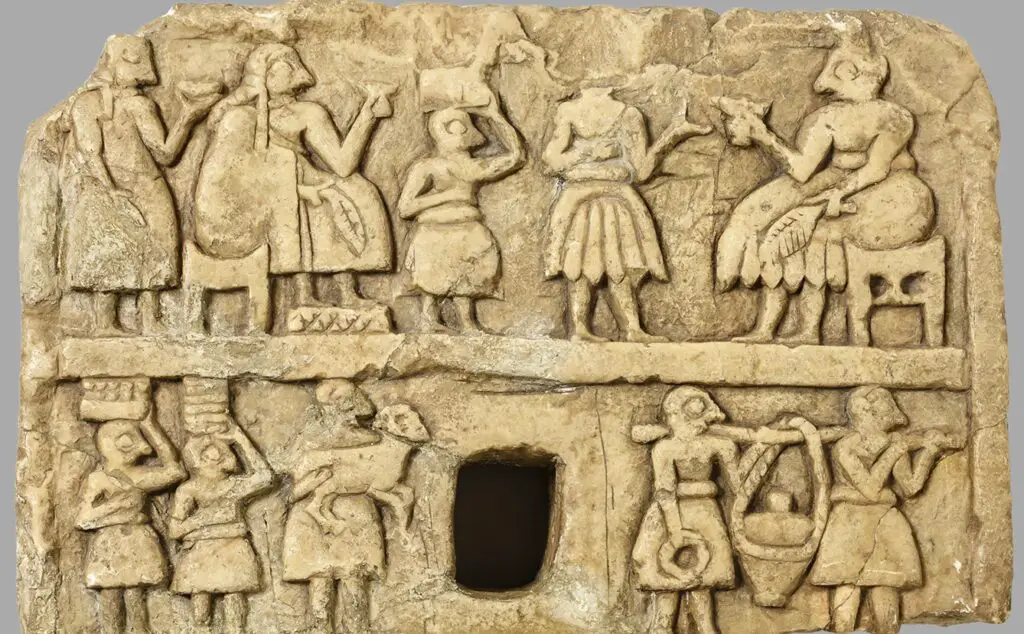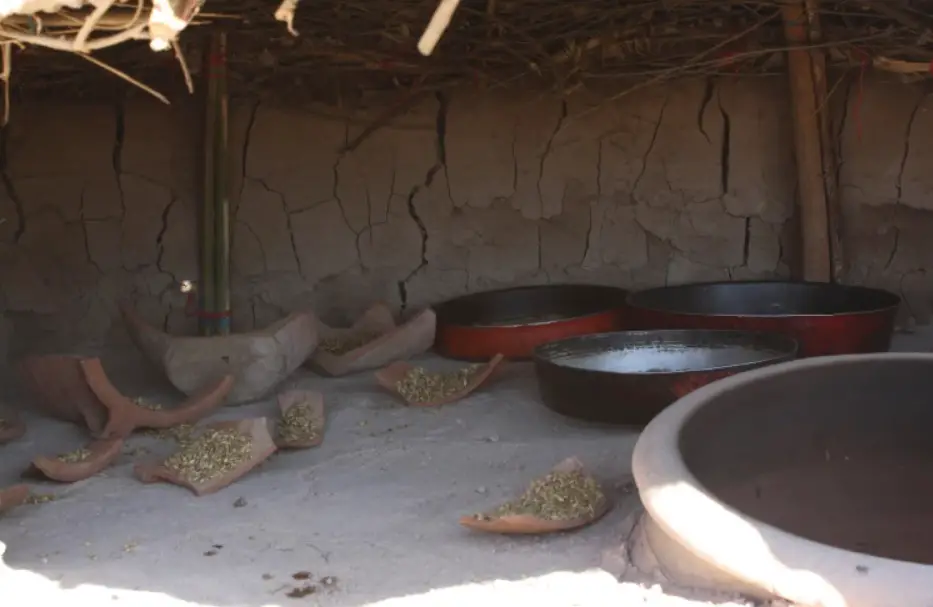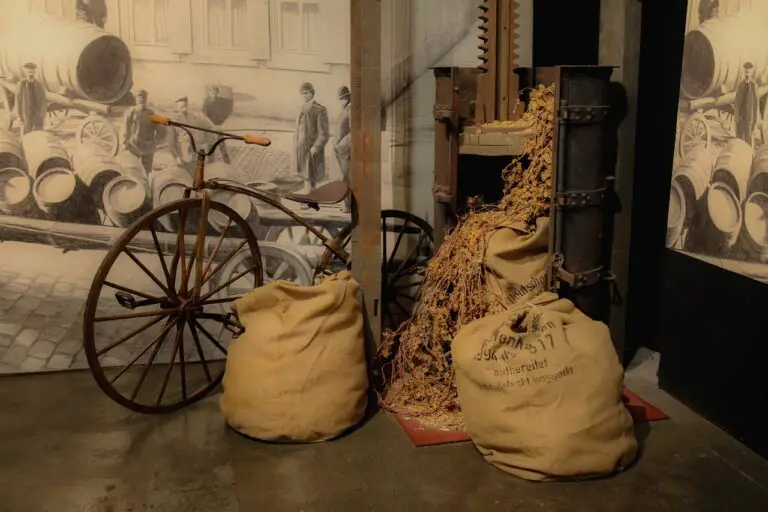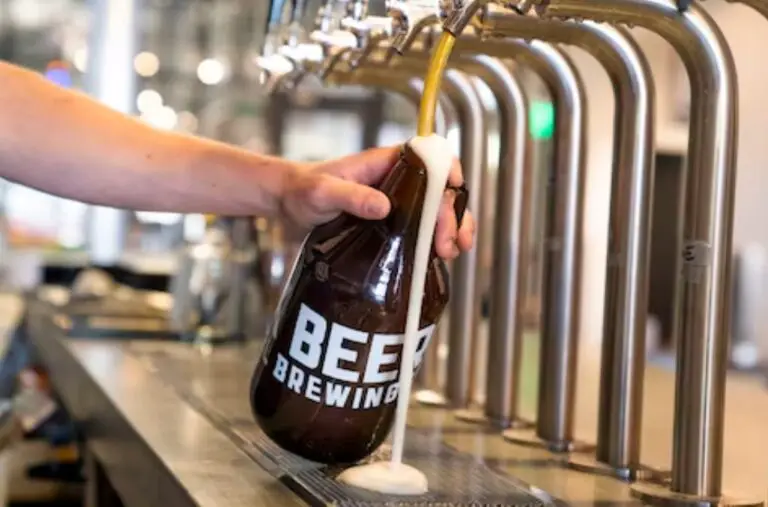The Oldest Beer Recipes in the World – Our Ultimate Guide
Beer has been a staple of human civilization for thousands of years, we already knew that. And beer is old, very, very old. Its origins go back to some of the earliest known societies. As one of the oldest prepared beverages in history, beer holds a unique place in our cultural heritage, offering insights into ancient daily life, agricultural practices, and social rituals.

This article explores some of the oldest beer recipes in the world, showcasing the ingenuity and tradition of our ancestors in their quest to brew this timeless drink.
Follow us on Instagram!
From the hymns of ancient Sumer, to the chemical residues found in Chinese pottery, each recipe tells a story of innovation and communal activity. Whether it’s the barley-based brews of Mesopotamia, the honey-infused beverages of early China, or the juniper-flavored ales of Scandinavia, these ancient recipes highlight the diverse methods and ingredients used in early brewing.
Let’s start!
#1 – Ninkasi Hymn (circa 1800 BCE)
Origin: Ancient Sumer, Mesopotamia (modern-day Iraq)
Description: This is one of the oldest known beer recipes, found in a hymn dedicated to the Sumerian goddess of brewing, Ninkasi. The recipe describes the process of brewing beer from barley and emmer wheat, utilizing bread (bappir) as a fermentation starter.

The recipe involves the following key steps:
Mashing Barley and Emmer Wheat: Barley and emmer wheat were mashed and then baked into a type of bread called bappir. This bread acted as a base and fermentation starter for the beer.
What is Emmer wheat? – Emmer wheat, also known as farro or hulled wheat, is one of the oldest varieties of wheat cultivated by humans. It is a type of ancient grain with a history that dates back over 10,000 years, originating in the Near East and spreading to various parts of the world, including Europe and the Mediterranean.
Fermentation: The bappir was combined with malted barley and water in large vats. This mixture was allowed to ferment naturally with the help of wild yeasts present in the environment.
Sweetening and Flavoring: Dates and honey were often added to sweeten the brew and enhance its flavor.
Filtering and Serving: After fermentation, the mixture was filtered to remove solid particles, resulting in a cloudy but drinkable beer. The final product was typically served in large communal jars and consumed through straws to avoid sediment.
#2 – Mesopotamian Beer (circa 3000 BCE)
Origin: Ancient Mesopotamia
Description: Archaeological evidence, such as pictograms and cuneiform tablets, indicates that the Mesopotamians brewed beer using barley. The detailed recipes have been reconstructed through the analysis of these artifacts.

The recipe involves the following key steps:
Malted Barley: The primary ingredient for Mesopotamian beer was barley, which was malted by soaking in water and allowing it to germinate. This process converted the starches in the barley into fermentable sugars.
Bappir Bread: Similar to the Sumerian method, barley was also baked into bappir bread. This bread was used both as a food source and as a crucial component in the beer-making process.
Fermentation: The bappir bread was crumbled and mixed with water in large clay vats. The natural enzymes from the malted barley facilitated the fermentation process, converting sugars into alcohol. The vats were left open to allow wild yeasts from the environment to ferment the mixture.
Flavoring: Ingredients such as dates, honey, and various herbs were sometimes added to enhance the flavor and sweetness of the beer.
Filtration and Consumption: Once fermentation was complete, the beer was filtered to remove solid residues. The final product was a thick, cloudy beverage, often consumed through straws to bypass the sediment. The straws also served to prevent the drinker from ingesting the floating particles left from the brewing process.
#3 – Egyptian Beer (circa 1500 BCE)
Origin: Ancient Egypt
Description: Beer was a staple in the Egyptian diet, and recipes were often recorded on papyrus scrolls. Egyptian beer was typically made from barley or emmer wheat, sometimes flavored with dates and herbs.

The recipe involves the following key steps:
Grains Used: The primary ingredients were barley and emmer wheat. These grains were either malted or parched, depending on the desired flavor and quality of the beer.
Baking the Bread: The grains were ground into flour and made into a type of bread known as “beer bread.” This bread was lightly baked, creating a product that could be crumbled easily for the brewing process.
Fermentation: The crumbled beer bread was soaked in water to create a mash. This mixture was left to ferment in large pottery jars. The fermentation process relied on natural yeasts present in the environment, which converted the sugars from the bread into alcohol.
Sweetening and Flavoring: The Egyptians often added dates or date syrup to the mixture, which provided additional sugars for fermentation and imparted a sweet flavor to the beer. Other flavorings, such as herbs and spices, might also be included.
Filtration and Consumption: After fermentation, the beer was filtered through a cloth to remove solid particles. The resulting beer was thick and cloudy, somewhat akin to a porridge. It was usually consumed fresh and had a relatively low alcohol content compared to modern beers.
#4 – Chinese Jiahu Beer (circa 7000-5700 BCE)
Origin: Ancient China, Jiahu site in Henan province
Description: Chemical analysis of pottery jars from the Jiahu site revealed a mixed fermented beverage made from rice, honey, and fruit. This early form of beer predates the more grain-focused brewing processes of Mesopotamia.

The essential components and process of Jiahu beer are as follows:
Primary Ingredients: The main ingredients used in Jiahu beer included rice, honey, and fruit. Chemical analyses of the residues found in the pottery jars revealed traces of these components.
Rice Preparation: The rice was likely malted or boiled to convert its starches into fermentable sugars. This step was crucial to creating a base for fermentation.
Honey and Fruit Addition: Honey was added both as a fermentable sugar and as a natural preservative. Fruits, possibly including hawthorn fruit and/or grapes, were also added. These fruits not only contributed additional sugars for fermentation but also provided flavors and nutrients to the brew.
Fermentation: The mixture of rice, honey, and fruit was left to ferment in large pottery jars. Fermentation was facilitated by wild yeasts and other microorganisms naturally present in the environment. This process converted the sugars from the rice, honey, and fruit into alcohol.
Storage and Consumption: Once fermentation was complete, the beer was likely consumed directly from the pottery jars. The final product was a complex beverage with a blend of sweet, fruity, and mildly alcoholic flavors.
#5 – Scandinavian Sahti (circa 1000 BCE)
Origin: Ancient Scandinavia
Description: Sahti is a traditional Finnish beer that has been brewed for thousands of years. It typically includes a mixture of grains such as barley, rye, and oats, flavored with juniper berries.

The key elements and steps of brewing Sahti are as follows:
Grains Used: Sahti is typically made using a mixture of grains, including barley, rye, and oats. These grains provide a complex flavor profile and a hearty base for the beer.
Malting and Mashing: The grains are malted and then mashed by soaking them in hot water. This process converts the starches in the grains into fermentable sugars, creating a sweet liquid known as wort.
Juniper Infusion: One of the distinctive features of Sahti is the use of juniper branches and berries. Juniper twigs are often placed at the bottom of the mash tun, and the hot wort is poured over them. This infusion imparts a unique piney flavor to the beer and also acts as a natural preservative.
Boiling and Fermentation: Unlike many modern beers, Sahti is traditionally not boiled. The wort is cooled and then transferred to fermentation vessels, where it is allowed to ferment with wild or commercial baker’s yeast. The lack of boiling preserves the raw flavors of the grains and juniper.
Filtration and Consumption: After fermentation, Sahti is typically filtered through a bed of juniper branches to remove solid particles. The resulting beer is unfiltered, cloudy, and has a high residual sweetness. It is often consumed fresh, without extensive aging.
#6 – Celtic Beer (circa 1st millennium BCE)
Origin: Ancient Celts in Europe
Description: The Celts brewed beer using barley and wheat, often fermenting it with wild yeasts. Remnants of ancient brewing facilities have been found in various Celtic archaeological sites.

The essential components and process of brewing Celtic beer are as follows:
Grains Used: The primary grains used in Celtic beer were barley and wheat. These grains were cultivated and harvested, forming the basis of the beer.
Malting and Mashing: The grains were malted by soaking them in water and allowing them to germinate, converting starches into fermentable sugars. The malted grains were then dried and ground into a coarse flour. This flour was mixed with hot water in a process called mashing, creating a sweet liquid known as wort.
Fermentation: The wort was transferred to fermentation vessels, often large wooden or clay containers. The Celts used wild yeasts from the environment to ferment the wort. The fermentation process converted the sugars in the wort into alcohol, producing beer.
Flavoring: Various herbs and spices were sometimes added to flavor the beer. Common additions included heather, bog myrtle, and other locally available plants. These ingredients not only added unique flavors but also had preservative properties.
Filtration and Consumption: After fermentation, the beer was filtered to remove solid particles. The resulting beverage was typically cloudy and had a relatively low alcohol content compared to modern beers. It was often consumed fresh, straight from the fermentation vessels.
So there you have it! Plenty of ancient beer recipes to choose from! I wonder how they tasted like…

I am a young architect with a passion that goes beyond blueprints… it’s beer! undertherosebrewing.com is more than just a blog, it’s a manifestation of my lifelong dream to explore, read, and learn everything about beer. Join the blog on this unfiltered and genuine adventure into the heart of beer culture. Cheers!







